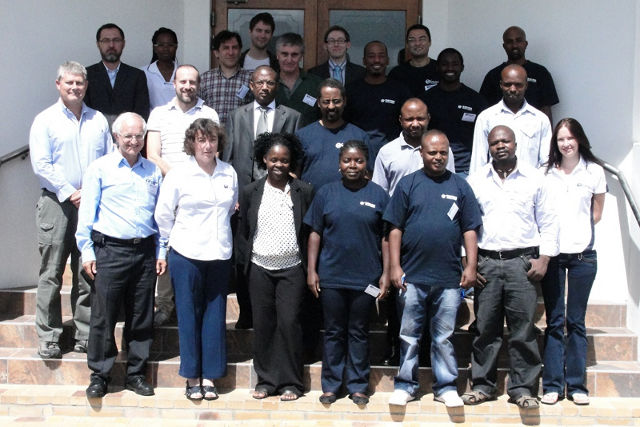
31 Jan Ionospheric Monitoring in Africa Workshop

SANSA Space Science hosted the 2013 Ionospheric Monitoring in Africa Workshop, 24 – 25 January 2013. The workshop brought together scientists from various European and African countries in an effort to highlight the current state of Africa’s ground-based ionospheric monitoring network.
The ionosphere (a region of our atmosphere extending from an altitude of about 50 km to about 1000 km) affects lives in diverse ways, ranging from its usefulness in High Frequency (HF) radio propagation, to its weakening of radio signals that have to pass through it. The ionosphere affects modern technologies such as communications, navigation systems and surveillance systems. In order to minimise these effects it is vital to gain an in-depth understanding of the ionosphere.
Scientists are currently in the process of mapping the ionosphere above the African region which will provide a number of benefits to its users. The workshop addressed various challenges in developing the infrastructure required in putting together this map.
The map, in the form of a computer program, will show a multi-dimensional representation of the ionosphere for a given set of geophysical parameters. “We have now identified a number of gaps and areas where instruments exist but the data from which is not yet being shared. This data goes hand in hand with the International Reference Ionosphere (IRI) model and once made accessible will be extremely beneficial.” said Dr Patrick Sibanda of the Department of Physics in Zambia. By increasing general ionospheric knowledge above lesser known areas, use of the ionosphere can be greatly enhanced, and significant allowance can be made for the affects ionospheric behaviour has on radio signals.
In support of this project, the workshop was funded by the European Space Agency (ESA) under the General Studies Programme. Dr Julian Rose from the University of Bath, UK noted the challenges faced in conducting research in Africa and said “Europe recognises the importance of this project and we are identifying areas across Africa in need of additional Global Positioning System receivers, to build a better picture of the ionosphere.”



